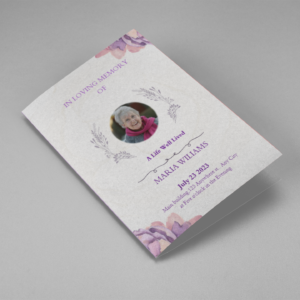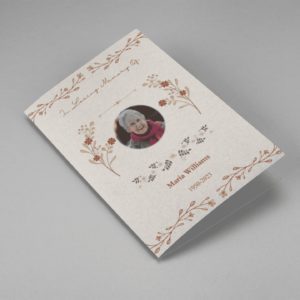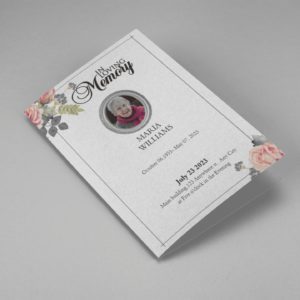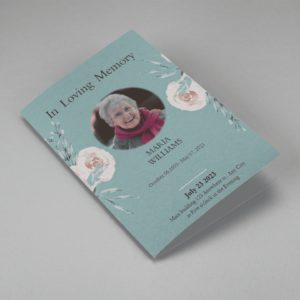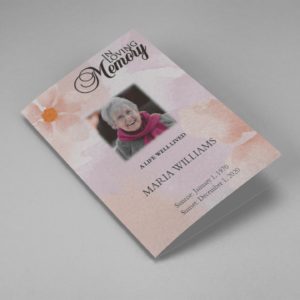Losing a loved one is one of life’s most challenging moments, and writing an obituary can feel overwhelming during such an emotional time. Customizable Sample Obituary Templates provide a helpful starting point, allowing you to craft a meaningful tribute without starting from scratch. These templates are pre-designed to guide you through writing a heartfelt obituary, while also offering flexibility for personalization.
Benefits of Customizable Sample Obituary Templates
Using customizable sample obituary templates can greatly ease the process of writing an obituary. Here are some key benefits:
1. Structure and Guidance
Obituary templates provide a structured outline, which helps guide you through the key elements of an obituary, such as personal details, life achievements, and service information. This structure ensures you cover all the necessary points while also offering room for personal touches.
2. Saves Time
Writing an obituary can be time-consuming, especially when you’re dealing with the emotional weight of loss. Using a template reduces the time it takes to create a well-organized obituary, giving you more time to focus on other arrangements or spend time with family.
3. Flexibility for Personalization
Though obituary templates come with a predefined structure, they allow flexibility for customization. You can adjust the text, add personal anecdotes, include photos, and modify details to reflect the personality and life of the deceased.
4. Professional Appearance
Customizable templates are often professionally designed, ensuring the final product is polished and appropriate for publication in newspapers, online memorials, or funeral programs. The layout and formatting are already in place, so you don’t have to worry about technical details.
5. Accessible and Affordable
Many websites offer free or low-cost obituary templates that you can download and customize. This makes the process more accessible to families who may not have the resources to hire a professional writer or designer.
Types of Customizable Sample Obituary Templates
There are several types of obituary templates available to suit different preferences and needs. Here are some common types:
1. Traditional Obituary Templates
Traditional obituaries follow a more formal structure and are often used for newspaper publications. These templates typically include basic information such as the deceased’s name, date of birth, date of death, and family details, as well as a summary of their life, career, and notable achievements.
2. Celebration of Life Obituary Templates
Celebration of life obituaries are less formal and focus more on celebrating the joy and impact the deceased had on others. These templates may include colorful design elements and focus on sharing stories, memories, and personal achievements rather than just factual details.
3. Religious Obituary Templates
Religious obituary templates include elements that reflect the deceased’s faith. They often contain spiritual quotes, prayers, or references to religious beliefs that were important to the individual. These templates are particularly helpful for families who want to emphasize the role of faith in their loved one’s life.
4. Short Obituary Templates
Sometimes space constraints, such as those in newspaper columns, require a shorter obituary. Short obituary templates provide a condensed version of a traditional obituary, focusing on the most essential details while keeping the length manageable.
5. Online Memorial Obituary Templates
Online memorials allow families to create detailed, digital tributes. Online obituary templates are designed for these platforms, often featuring space for photos, videos, and extended stories or tributes from friends and family. They also usually provide interactive features, like guestbooks or comment sections.
How to Choose the Right Customizable Obituary Template
Selecting the right template depends on several factors, including the tone you want to set, the space available, and the preferences of the family. Here’s how to choose the most suitable obituary template for your needs:
1. Consider the Tone
Think about whether you want the obituary to be formal, casual, or celebratory. If your loved one had a joyous, outgoing personality, a celebration of life template might be more fitting than a traditional one. Conversely, if they were reserved or you want a respectful tone, a traditional or religious template might be more appropriate.
2. Determine the Length
Consider how much space you need to tell the story of your loved one’s life. If you’re publishing the obituary in a newspaper, you may need to adhere to word count limits, so a short obituary template might work best. For online memorials, you can usually go into more detail with a longer template.
3. Think About Design Preferences
Some families prefer simple, elegant designs, while others might opt for more vibrant, personalized layouts. Look for a template that aligns with your family’s aesthetic preferences. If including photos is important to you, make sure the template has designated spaces for images.
4. Choose a Template with Personalization Options
Ensure that the template you choose is customizable so you can easily add personal details like special memories, hobbies, and quotes. Some templates allow more customization than others, so pick one that gives you the flexibility you need.
5. Check Compatibility with Platforms
If you’re planning to publish the obituary online or in a printed program, make sure the template is compatible with the platform or software you’re using. Most templates are available in common formats like Word, Google Docs, or PDF, but it’s always good to double-check.
Tips for Writing an Obituary Using a Template
Once you’ve selected the right obituary template, follow these tips to ensure your writing is heartfelt and clear:
1. Gather Key Information
Before you begin writing, gather all the important details about the deceased, such as their full name, date of birth, date of death, family members, and life achievements. Having this information on hand will make the writing process smoother.
2. Start with a Strong Opening
Begin the obituary with a brief introduction that includes the full name of the deceased, their age, and the date of their passing. You can also include a sentence that sets the tone, such as “It is with great sadness that we announce the passing of…” or “We celebrate the life of…”
To make the obituary more personal and meaningful, consider including short stories or anecdotes that capture the spirit of your loved one. These could be about their hobbies, passions, or how they impacted the lives of others.
4. Acknowledge Family Members
Be sure to mention immediate family members, both those who have passed and those who survive the deceased. This usually includes parents, siblings, children, grandchildren, and spouses or partners. You may also want to include close friends or other significant individuals.
5. Include Service Details
If you’re planning a public or private funeral or memorial service, include the date, time, and location of the service in the obituary. If you prefer donations in lieu of flowers, mention any charitable organizations where people can contribute in honor of the deceased.
6. Proofread Carefully
Before finalizing the obituary, read through it several times to ensure there are no errors in spelling, grammar, or factual information. You might also ask another family member to review it for accuracy and tone.
Funeral Obituary Templates
-
Searching for a Oak Leaf With Gold Oval Frame Half Page Funeral Program that is easy to print and amass and has a cutting-edge look? The Oak Leaf With Gold Oval Frame Half Page Funeral Program is the Perfect decision because it measures 8.5”x 5.5”.
- No Limitation on Content, Edit anything
- Edit anytime – unlimited revisions even after purchased
- Get a printable PDF downloaded to get it printed on your own.
-
Searching for a Brown and White Classic Funeral Program Half Page Program that is easy to print and amass and has a cutting-edge look? The Brown and White Classic Funeral Program Half Page Program is the Perfect decision because it measures 8.5”x 5.5”.
- No Limitation on Content, Edit anything
- Edit anytime – unlimited revisions even after purchased
- Get a printable PDF downloaded to get it printed on your own.
-
Searching for a Purple Elegant Watercolor Half Page Funeral Program Template that is easy to print and amass and has a cutting-edge look? The Purple Elegant Watercolor Half Page Funeral Program Template is the Perfect decision because it measures 8.5”x 5.5”.
- No Limitation on Content, Edit anything
- Edit anytime – unlimited revisions even after purchased
- Get a printable PDF downloaded to get it printed on your own.
-
Searching for a Cream and Green Photo Obituary Half Page Program that is easy to print and amass and has a cutting-edge look? The Cream and Green Photo Obituary Half Page Program is the Perfect decision because it measures 8.5”x 5.5”.
- No Limitation on Content, Edit anything
- Edit anytime – unlimited revisions even after purchased
- Get a printable PDF downloaded to get it printed on your own.
-
Searching for a Cream Simple Elegant Photo Church Half Page Program that is easy to print and amass and has a cutting-edge look? The Cream Simple Elegant Photo Church Half Page Program is the Perfect decision because it measures 8.5”x 5.5”.
- No Limitation on Content, Edit anything
- Edit anytime – unlimited revisions even after purchased
- Get a printable PDF downloaded to get it printed on your own.
-
Searching for a Samovar Silver Half Page Funeral Program Template that is easy to print and amass and has a cutting-edge look? The Samovar Silver Half Page Funeral Program Template is the Perfect decision because it measures 8.5”x 5.5”.
- No Limitation on Content, Edit anything
- Edit anytime – unlimited revisions even after purchased
- Get a printable PDF downloaded to get it printed on your own.
-
Searching for an Elegant Beige Half Page Funeral Program Template that is easy to print and amass and has a cutting-edge look? The Elegant Beige Half-Page Funeral Program Template is the Perfect decision because it measures 8.5”x 5.5”.
- No Limitation on Content, Edit anything
- Edit anytime – unlimited revisions even after purchased
- Get a printable PDF downloaded to get it printed on your own.
-
Searching for a White Floral Pro Half Page Funeral Program Template that is easy to print and amass and has a cutting-edge look? White Floral Pro Half Page Funeral Program Template is the Perfect decision because it measures 8.5”x 5.5”.
- No Limitation on Content, Edit anything
- Edit anytime – unlimited revisions even after purchased
- Get a printable PDF downloaded to get it printed on your own.
-
Searching for a Grey and Burgundy Elegant Half Page Funeral Program Template that is easy to print and amass and has a cutting-edge look? Grey and Burgundy Elegant Half Page Funeral Program Template is the Perfect decision because it measures 8.5”x 5.5”.
- No Limitation on Content, Edit anything
- Edit anytime – unlimited revisions even after purchased
- Get a printable PDF downloaded to get it printed on your own.
-
Searching for a Soft Green and Grey Minimalist Floral Half Page Funeral Program Template that is easy to print and amass and has a cutting-edge look? Soft Green and Grey Minimalist Floral Half Page Funeral Program Template is the Perfect decision because it measures 8.5”x 5.5”.
- No Limitation on Content, Edit anything
- Edit anytime – unlimited revisions even after purchased
- Get a printable PDF downloaded to get it printed on your own.
-
Searching for a Gray Elegant Oval Frame Half Page Funeral Program Template that is easy to print and amass and has a cutting-edge look? Gray Elegant Oval Frame Half Page Funeral Program Template is the Perfect decision because it measures 8.5”x 5.5”.
- No Limitation on Content, Edit anything
- Edit anytime – unlimited revisions even after purchased
- Get a printable PDF downloaded to get it printed on your own.
-
Searching for a Blue Organic Minimal Half Page Funeral Program Template that is easy to print and amass and has a cutting-edge look? Blue Organic Minimal Half Page Funeral Program Template is the Perfect decision because it measures 8.5”x 5.5”.
- No Limitation on Content, Edit anything
- Edit anytime – unlimited revisions even after purchased
- Get a printable PDF downloaded to get it printed on your own.
-
Searching for a Pink and Orange Watercolour Half Page Funeral Program Template that is easy to print and amass and has a cutting-edge look? Pink and Orange Watercolour Half Page Funeral Program Template is the Perfect decision because it measures 8.5”x 5.5”.
- No Limitation on Content, Edit anything
- Edit anytime – unlimited revisions even after purchased
- Get a printable PDF downloaded to get it printed on your own.
-
Searching for a Pink Floral Paper Half Page Funeral Program Template that is easy to print and amass and has a cutting-edge look? Pink Floral Paper Half Page Funeral Program Template is the Perfect decision because it measures 8.5”x 5.5”.
- No Limitation on Content, Edit anything
- Edit anytime – unlimited revisions even after purchased
- Get a printable PDF downloaded to get it printed on your own.




